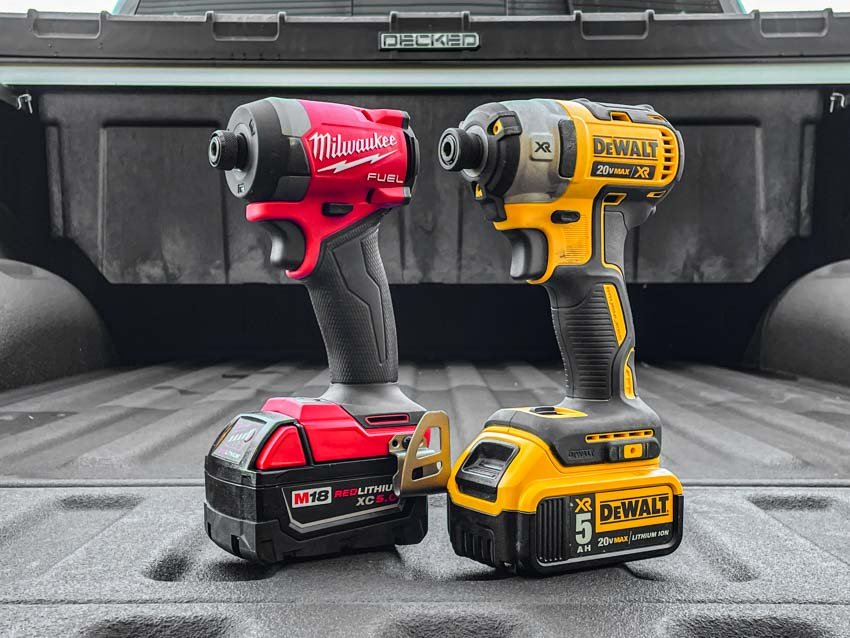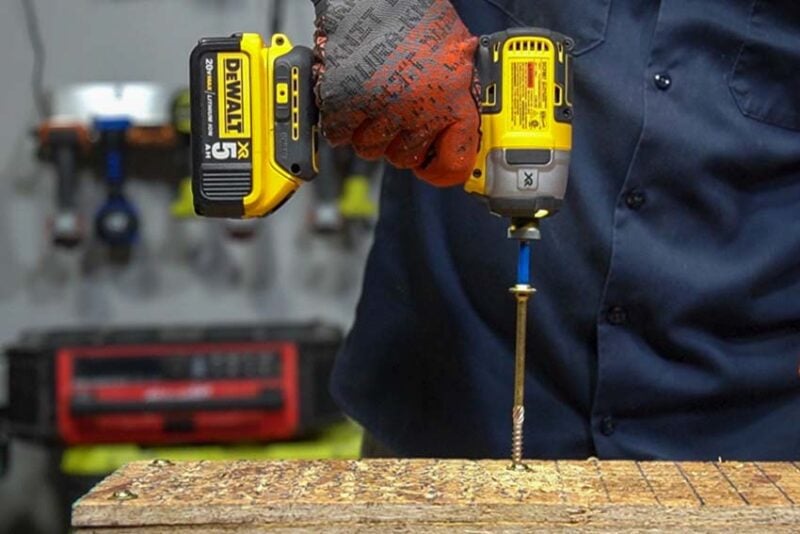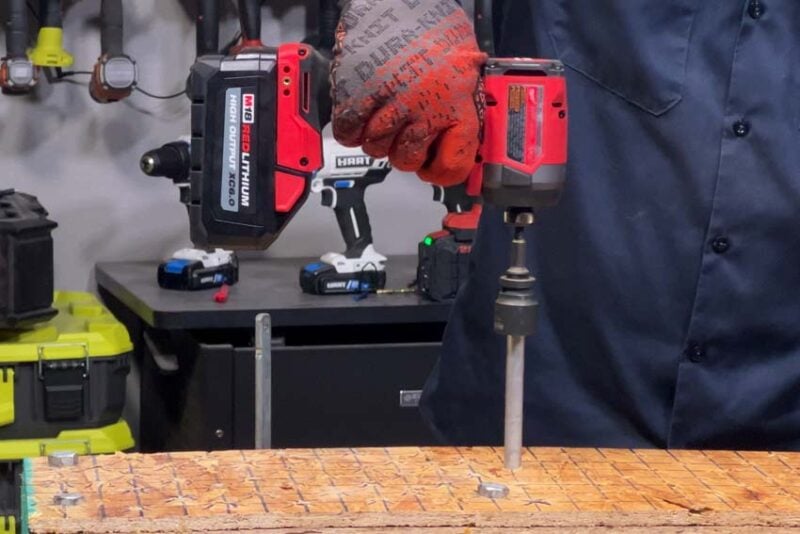
In a battle of flagship models, we’re taking a closer look at the DeWalt DCF887 vs the Milwaukee 2953 impact driver in a head-to-head review. For DeWalt, it’s the tried and true brushless model that’s been around for years and forms the foundation of a Tool Connect version (DCF888). For Milwaukee, it’s the 4th generation M18 Fuel model that came out in 2022.
Even as we’re writing this, DeWlat has announced a new impact driver (DCF845) that should take over the flagship role for the 20V Max line. We haven’t had a chance to test it yet, but once we do, we’ll update this article with the results.
We’re going to lay out what we objectively know, but the ultimate question is… which one is right for you? Everyone has different priorities, so it could come down to the highest performance, lightest weight, lowest price, or something else. Whichever one is the winner in your book, let us know in the comments below!
Check out our best impact driver recommendations for the year!
Why Not Use the DeWalt Atomic DCF850?
DeWalt’s DCF850 boasts the same specs as the DCF887 in a much lighter and more compact form factor. However, we got consistently higher performance in our tests from the 887, so we decided it was the better choice for this comparison.
Milwaukee Vs DeWalt Impact Driver Specifications
Here’s what the manufacturers say about both impact drivers along with the head lengths and weights we measured:
| DeWalt DCF887 | Milwaukee 2953 | |
| Top Speeds | 1000/2800/3250 RPM | 1700/3000/3900 RPM |
| Max Impact Rate | 3800 IPM | 4400 IPM |
| Max Torque | 1825 in-lbs | 2000 in-lbs |
| Head Length | 5.3 in | 4.5 in |
| Bare Weight | 2.1 lbs | 2.2 lbs |
| Weight w/5.0Ah Battery | 3.4 lbs | 3.9 lbs |
Milwaukee Vs DeWalt Impact Driver Test Results

We ran three different performance tests to see what these impact drivers can do with a standard 5.0Ah battery. The first is a medium-load test driving a 6-inch x 1/4-inch GRK Fasteners RSS screw into stacked OSB subfloor. The result is the average of three tests.
The second test is timed to see how far each model can drive a 10-inch x 1/2-inch lag screw into the same material in 30 seconds. The result is the average of how much of the screw remained proud in three tests—less is better.
The third test is to see how long it takes to break loose a nut that is set to 150 ft-lbs (1800 in-lbs). The result is the total time added together for 5 bolts.
| DeWalt DCF887 | Milwaukee 2953 | |
| RSS Screw Average | 12.6 seconds | 8.6 seconds |
| Lag Screw Average | 3.8 inches | 1.7 inches |
| Nut-Busting Total | 6.6 seconds | 2.5 seconds |
What if you have access to advanced batteries? We tested those, too! The overall capacities of the batteries aren’t the same, but we kept them as close as we could.

| DeWalt DCF887 w/5.0Ah Power Stack |
Milwaukee 2953 w/6.0Ah High Output |
|
| RSS Screw Average | 10.1 seconds | 6.7 seconds |
| Lag Screw Average | 3.4 inches | 1.2 inches |
| Nut-Busting Total | 6.5 seconds | 1.9 seconds |
Milwaukee Vs DeWalt Impact Driver Price
| DeWalt DCD887 | Milwaukee 2953 | |
| Bare Tool | $149.00 | $149.00 |
| Compact Battery Kit | $219.00 (2 x 2.0Ah) | Not available |
| Standard Battery Kit | $319.00 (2 x 4.0Ah) | $299.00 (2 x 5.0Ah) |
| Warranty | 3 years | 5 years |
So who’s your winner? Let us know in the comments below—bonus points for telling us why!






